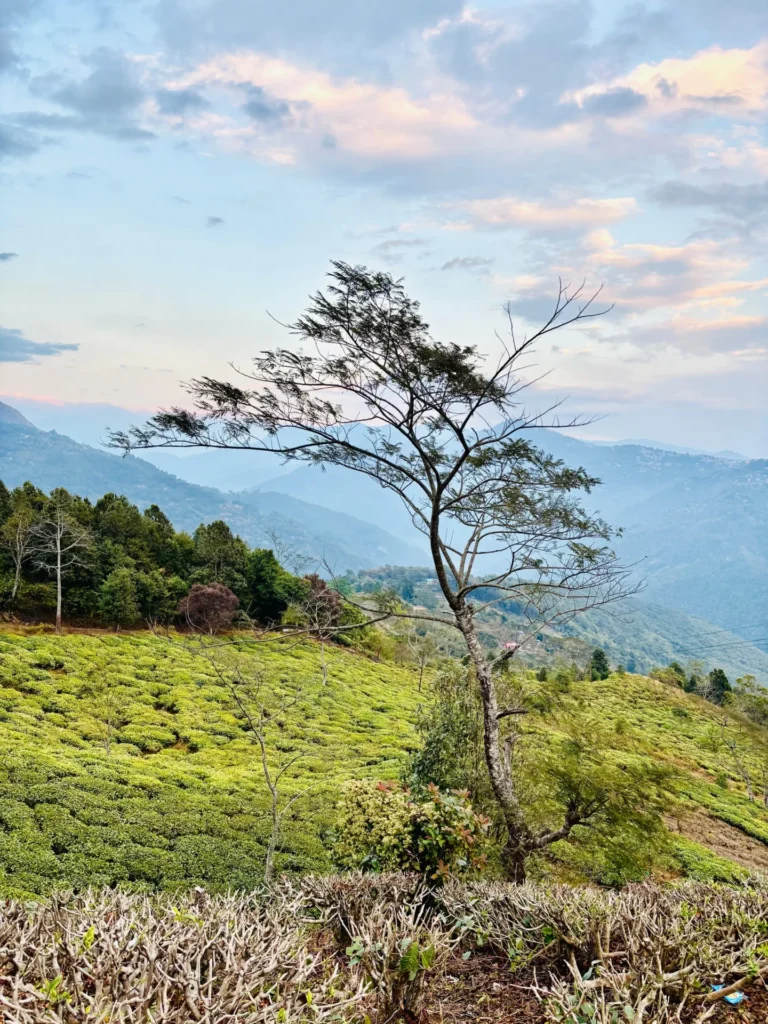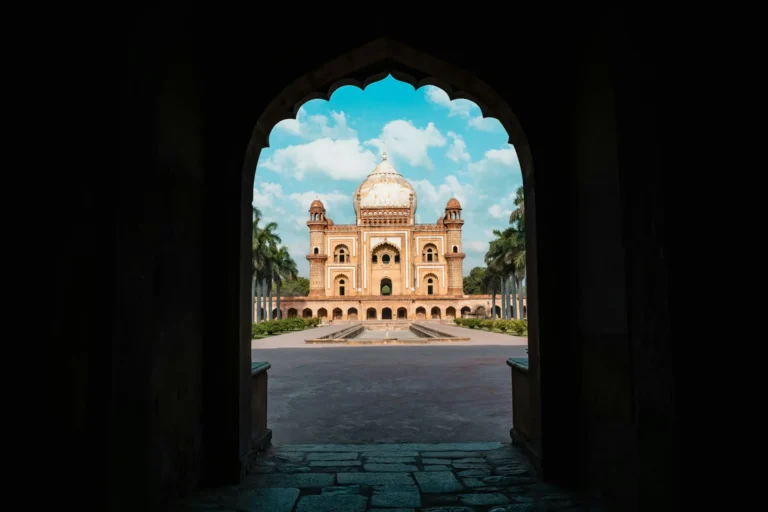India is a country rich in culture and traditions and temples are the representations of the same. This article is a perfect guide to know about the temple culture, rituals, architectural brilliance and many more.
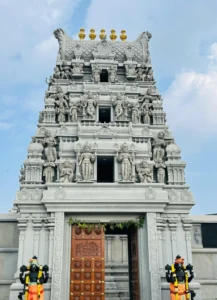
North vs. South Indian Temples – Architectural Differences and Importance:
- The domes or Shikhara of the North Indian temples have inward slopes whereas the Shikharas of the South Indian temples are stepped and a bit concave.
- The gateways or entrance doors of South Indian temples are very massive and give a grand feeling right from the first step. On the other hand, North Indian temples are very subtle with their gateway structures.
- North Indian temples have very flat and simple assembly halls (Mandapa) and don’t include water tanks in them. However, in the case of South Indian temples, the Mandapas are very much elaborate and the temples consist of enclosed water tanks which are considered sacred.
| Feature | North Indian Temples | South Indian Temples |
| Shikhara (Dome) | Inward sloping | Stepped and slightly concave |
| Gateway (Entrance) | Subtle and smaller | Massive and grand |
| Mandapa (Assembly Hall) | Flat and simple | Elaborate and detailed |
| Water Tank | Usually not included | Enclosed sacred water tank present |
Table of Contents
ToggleImportance of North Indian Temples:
- Helps in building the strong spiritual connection of both locals as well as visitors with the powerful deities.
- Represents an epitome of creativity and beauty through its architecture and richness of culture.
- Takes people back to the historical times and signifies the historical importance of a particular place, time, and deity.
Importance of a South Indian Temple:
- South Indian temples create a connecting link between the social life and religious beliefs of people.
- Along with educational institutions, even South Indian temples are the educational and economic hubs of both the historical and present times.
- Represents the dynasties, ruling styles, and achievements of the Pallavas, Pandyas, Cholas, and Vijayanagara cultures. Also, most of the South Indian temples are considered the guardians of the Dravidian era, which safeguards the art, heritage, history, and architecture of those times even today.
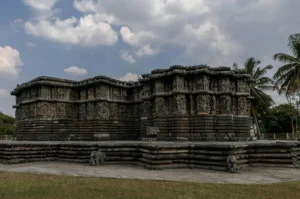
| Aspect | North Indian Temples | South Indian Temples |
| Spiritual Role | Builds strong spiritual connection with deities for locals and visitors | Links social life with religious beliefs |
| Cultural Significance | Showcases creativity, beauty, and cultural richness | Preserves Dravidian art, heritage, and architecture |
| Historical Value | Highlights historical importance of place, time, and deity | Represents dynasties like Pallavas, Pandyas, Cholas, and Vijayanagara |
| Educational & Economic Role | — | Functions as educational and economic centers historically and today |
Temple Etiquettes and Rules Every Traveler Must Follow:
The temple atmosphere is much more sacred and that is why the temple etiquette and rules to visit the temples are much stricter. All the travelers who visit temples as a part of their tours should briefly understand the rules and etiquettes of the respective temple and then plan their trip accordingly.
Remove Your Footwear Outside:
Removing footwear outside before entering a temple is a very basic etiquette that is followed everywhere throughout India. This is to show respect to the spiritual power of the temple and the Gods in them.
Dress Elegantly and Subtly:
The reason for the subtle outfit is to show one’s devotion towards God and ignorance towards the outerly attractions. Grabbing too much attention at a temple due to flashy clothes will not let the person enjoy their temple-visiting experience.
Don’t Speak Loudly:
As a part of the decorum of a temple, it is recommended to speak softly or maintain silence in the temple premises. It is believed that temples are a place to find peace of mind and relaxation from the chaos of the outer world. Remaining silent or speaking softly is important to not disturb others visiting the temple and is also a form of showing gratitude towards God.
Don’t take Photos and Videos from Restricted Areas:
Temples always provide strict instructions to prevent photo and videography in specific restricted areas.
Take Clockwise Circumambulations around the Deities:
While offering prayers to the deities of the temple, make sure to take clockwise circumambulations. Going around the deity clockwise is a sign of showing reverence to it and that is why the clockwise circumambulations, also called Pradakshinas are preferred in temples.
Show Respect to Local Traditions and Customs:
Every temple and the locals living around it have their own beliefs, customs, and traditions. Before entering the respective temple to offer your prayers, make sure to understand as many local customs and traditions as possible. This way, you will be able to serve the deity of the respective temple better and seek their blessings with whole heart and devotion.
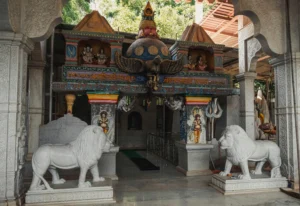
How to Plan a Temple Tour in India – Budget, Routes, and Travel Theory:
Planning a temple tour in India needs a little bit of preparation if not a lot. This includes the exact route of the temple from your respective location, researching the best means of transportation, finding out the best time to visit the respective temple, and the total budget of the tour.
Let’s explore all these sections in detail one by one –
Tour Budget:
Deciding on a tour budget is the starting point of any best temples in india tour. Without a fixed budget, even the smallest or closest tour can become a very expensive one.
Routes:
The first step towards planning the most visited temples in india tour is to understand the routes and means of transportation thoroughly. Check for all the possible routes to reach that temple from your respective location. Select the best route that suits your comfort and fits your budget.
Travel Theory:
Research what other people have said about your selected temple properly. You will get to know what is the best time to reach the respective temple, how the daily routine of the temple works, how attractive is the surrounding view or landscape, which is the best point or spot for clicking incredible photos or recording amazing videos, and what are the special festivals or occasions celebrated in the temple.
Best Time to Visit:
Last but not least, have a quick check on the best time to visit your selected temple. The best times to visit a place are a little crowded, but you can experience some precious occasions or festivals only during that time of the year. So, visiting a temple at the best time of the year is very important.
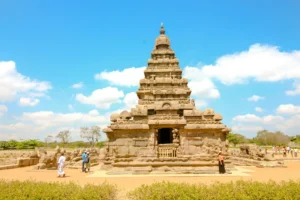
Top 10 Indian Temples with Unique Architectural Designs:
Below is a list of the top 10 hindu pilgrimage temples with the best and most unique architectural designs India-wide –
Meenakshi Amman Temple of Madurai (Tamil Nadu):
This temple represents the architectural miracle of the Dravidian era with its 14 gateway towers, also called gopurams. Among all the 14 gopurams, the tallest one is about 170 feet tall. There exists a Aayirankaal Mandapam which has around 1000 pillars throughout.
Modhera Sun Temple of Gujarat:
The Modhera Sun Temple, as its name suggests, is dedicated to the Sun God. This temple consists of a stepwell, also called Surya Kund and an assembly hall, also called Sabha Mandapa with some unique architecture about daily life scenes.
Kailasha Temple, Ellora of Maharashtra:
Kailasha is a monolithic temple which was originally carved out from only a single rock. The formation of this temple was done in the 8the century and is a Rashtrakuta marvel consisting of multi-storeys consisting of courtyards, pillars, and even unique sculptures.
Virupaksha Temple of Hampi:
The Virupaksha Temple is a perfect representation of the architectural legacy of the Vijayanagara Empire. The statue of worship of this temple is active, which elevates people’s worshipping experience to a much greater extent.
Ranakpur Jain Temple of Ranakpur:
One of the most unique features of the architecture of Ranakpur Jain temple are the 1,444 pillars that are perfectly carved. Among these pillars, every 2 pillars are identical to each other. There is a play of light in the temple which increases the intensity of uniqueness of the temple to 10 folds.
Shore Temple, Mahabalipuram of Tamil Nadu:
The Shore Temple of Mahabalipuram is a great showcase of the 8th-century Pallava dynasty’s unique architectural work. This temple has a total of 3 shrines which are dedicated to both the lords of power (Lord Shiva and Lord Vishnu respectively).
Lingaraj Temple, Bhubaneswar of Odisha:
One of the best and incredible examples of the best architectural temple versions of Kalinga is the Lingaraj Temple of Bhubaneswar, Odisha. All over the temple, the architecture consists of small shrines, not only on the walls but shikara as well.
Dilwara Temple, Mount Abu of Rajasthan:
Dilwara Temple is not a single temple but a cluster of about 5 temples representing Jainism. The pillars, ceiling, and doorways of this temple are totally breathtaking and consist of marble carved throughout the place.
Badami Caves Temples of Karnataka:
The Badami Caves temples of Karnataka date back to the 16th century from the time of the Chalukya dynasty. These are the best representations of the early-age South Indian temples and symbolize both Jainism and Hinduism.
Chaturmukha Basadi Temple, Karkala of Karnataka:
This temple is a uniquely-styled Jain temple which is very famous for its sculptures and architecture. Chaturmukha Basadi temple has a total of 4 entrances which are also called the 4 faces of the temple, located at the 4 cardinal directions.
All the above best temples in India are the most unique representations of creative architecture which are recognized and well-known, not only in India but worldwide.

Hidden & Underrated Temples in India Worth Visiting:
In India, there exist some hidden and underrated temples which are of equal worth but not-so-well-recognized. Some of such hidden and underrated temples of India are –
Kotilingeshwara Temple, Kolar of Karnataka:
The Kotilingeshwara Temple consists of one of the largest Shivalingas in the world, which is about 108 feet tall. It stands strong as a testament of power, devotion, and combined efforts of a community which forms a great spectacular representation in itself.
Chausath Yogini Temple, Hirapur of Odisha:
Dedicated to the 64 Yoginis, this powerful temple got its name but remained unrecognized from the world. The design of the temple is completely circular and the temple doesn’t consist of a roof, which is very unique for an architecture for sure.
Bateshwar Temples of Morena, Madhya Pradesh:
Bateshwar is a place with a collection of about 200 sandstone temples which are intricately carved and attained perfection. These temples are specifically dedicated to Lord Shiva, Vishnu, and Goddess Shakti. These temples were constructed in the 8th to 10th centuries, during the rule of the Gurjara-Pratihara dynasty.
The above and many other temples of India are still hidden and unidentified, but holds its spiritual significance very strongly.
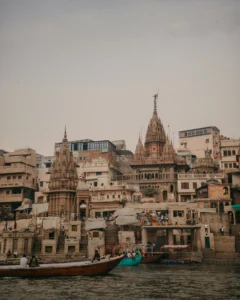
FAQs:
What is the best season to visit temples?
Yes, most of the above-mentioned temples have a great atmosphere and hold many festivals in the winter season. That is why the months from October to March of the winter season are considered best for tourists to visit and explore these temples.
What are some basic etiquettes to follow inside temples?
Talking softly or mostly preferring silence, wearing decent and subtle-colored clothes, taking clockwise rounds (Pradakshinas) around the deities, etc., should be strictly followed to maintain the decorum of the temple.
What transportation options are available for tourists to visit temples?
According to different locations of the spiritual places in India, the diverse transportation options also vary. For some temples, all transportation options such as by air, by road, and by rail are available, while for others, only 1 or 2 of them can be available.
Festivals or rituals that are common for all the temples in India?
Some of these rituals care Aarti, cultural and historical temple sculpture, Padakshinas offered to the deities, and following peaceful etiquettes in the temple premises.
Are tour guides available at temples to guide the tourists?
In most of the hindu pilgrimage temples, tour guides are available to guide the tourists about everything related to the temple. There may exist some temples where this facility is absent. In such places, visitors need to get help and guidance from the locals to know about the rules, history, significance, special features, and importance of the deities of the temple.
Conclusion:
Every temple in India and throughout the world has its own beliefs, principles, and rules. Understanding all of them properly and then following them is very crucial while visiting the respective temple, whether you are a tourist or a local. This article is a collective guide providing detailed insights into the temple culture, distinguishing factors between north and south Indian temples, and the top 10 Indian temples with the best architecture and overall structure.

